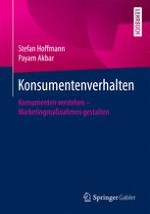2016 | OriginalPaper | Chapter
11. Mediale Umwelt
Authors : Stefan Hoffmann, Payam Akbar
Published in: Konsumentenverhalten
Publisher: Springer Fachmedien Wiesbaden
Activate our intelligent search to find suitable subject content or patents.
Select sections of text to find matching patents with Artificial Intelligence. powered by
Select sections of text to find additional relevant content using AI-assisted search. powered by
